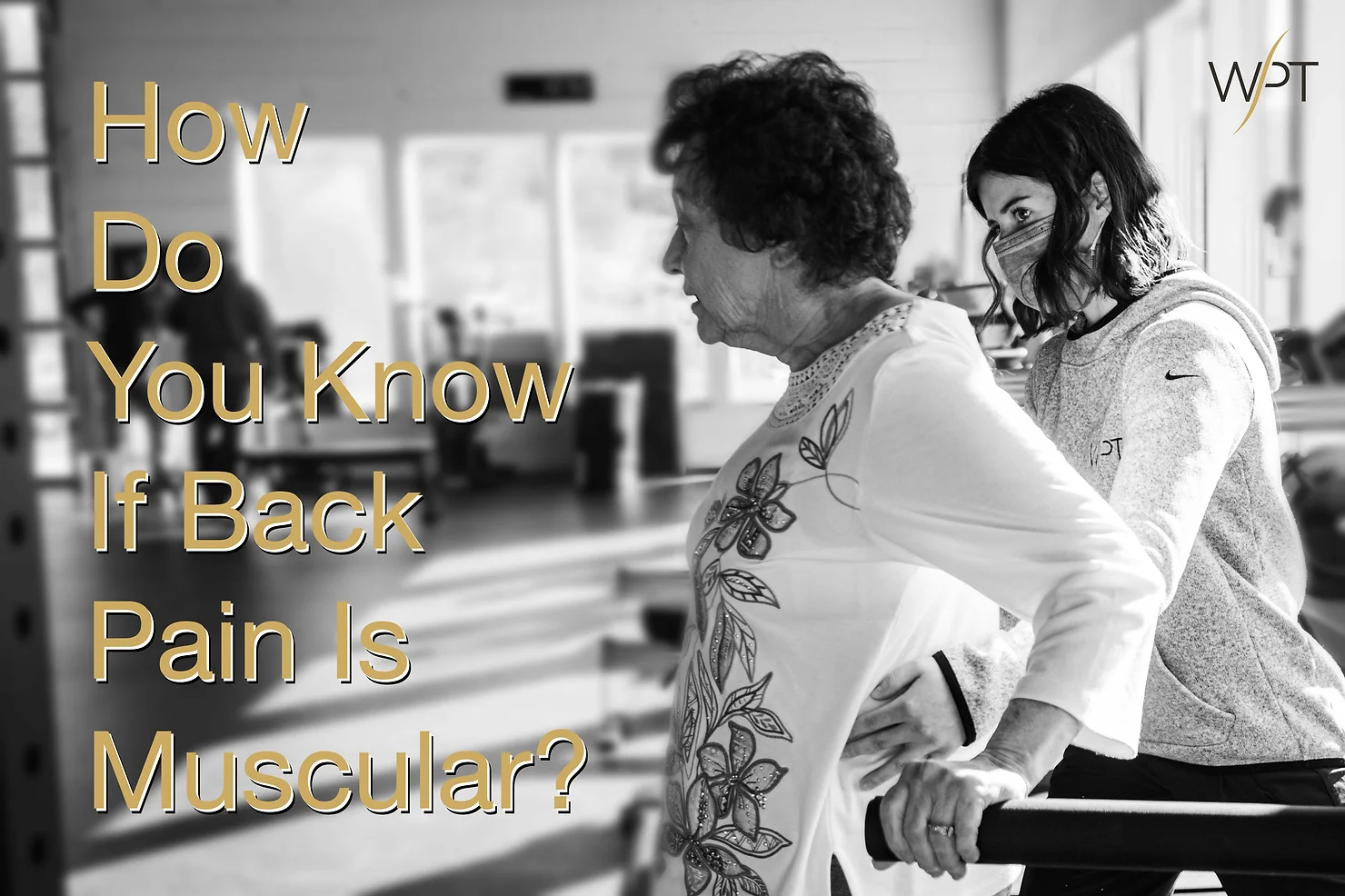You might go to lift an object at work when all of a sudden, pain strikes in your low back. Or you might notice your back pain come on gradually over the course of a few days. Either way, it’s not ideal.
So, what’s going on? And how do you know if your back pain is muscular or not? In this article, we’re going to dive into muscular causes of back pain, the signs and symptoms of muscular back pain, and how physical therapy can help. Let’s take a look!
According to the World Health Organization, back pain affects about 60-70% of individuals in industrialized countries. These statistics tell us that about six to seven individuals out of every ten people will experience back pain at some point in their life. In other words, you aren’t alone.
Muscular causes of back pain include muscle strains and muscle spasms. Muscle strains happen when muscles that support or connect to the spine and nearby structures are pulled past their usual limits. In worse-case scenarios, this may result in a torn muscle.
On the other hand, muscle spasms may happen when a muscle or ligament gets torn in the low back. Both muscle strains and muscle spasms can occur due to overuse or injury, such as poor posture, lifting heavy objects, or performing an exercise the wrong way. Additionally, being overweight or not performing enough exercise can increase your risk of a muscle spasm or strain.
Muscular Back Pain Signs and Symptoms
So, how can you know for sure if your pain is muscular or not?
Usually, you’ll experience the following signs:
-
Your pain increases with movement.
-
You experience muscle spasms or cramps.
-
You struggle to stand up or sit up straight.
-
You experience pain when you bend or twist your torso.
Generally, muscular back pain won’t cause radiating or burning pain. If you have numbness or tingling down your legs combined with back pain, this is likely due to neural compressions, such as a slipped disc or a pinched nerve. However, muscular back pain can lead to a pinched nerve. Thus, it’s essential to get your pain checked out either way.
How Physical Therapy Can Help
A physical therapist can help diagnose and treat back pain and prevent future pain or injury. At your first visit, your physical therapist performs a thorough assessment, diagnosing your back pain as muscular or not. This initial assessment involves various questions regarding your pain levels and when the pain started and tests measuring your strengths and weaknesses.
From there, your physical therapist creates an appropriate treatment plan to include prescribed exercises, manual therapy techniques, massage, and other modalities. Movement is a vital part of your recovery. While you might feel tempted to rest or try to sleep it off, it’s best to move once the initial pain has subsided. Remaining active can help prevent the weakening of specific muscles, reducing your chances of experiencing pain again.
If you’re currently experiencing back pain, our team is ready to help. With a physical therapist, you can get back to your regular activities as soon and safely as possible. Contact us today for more information.

